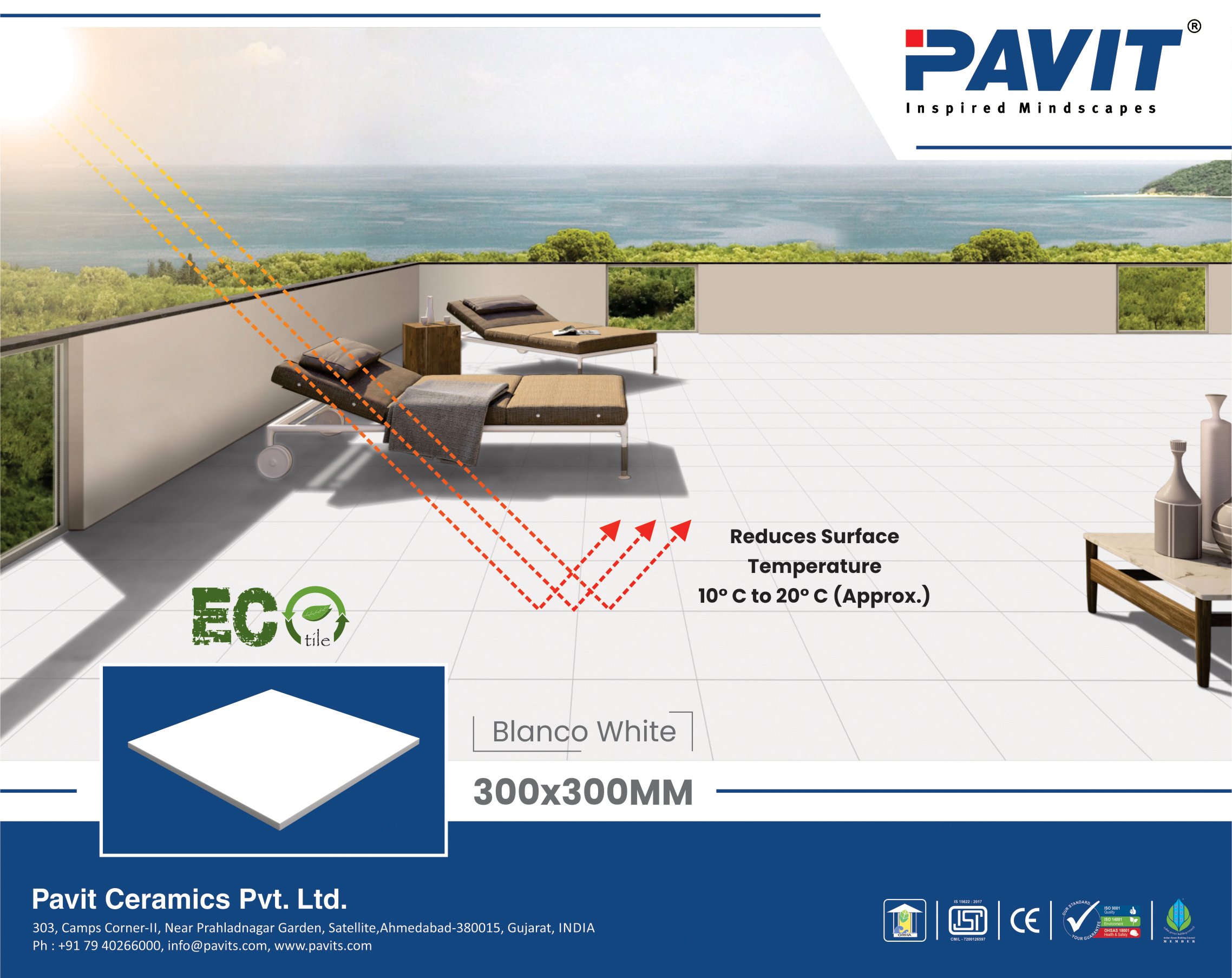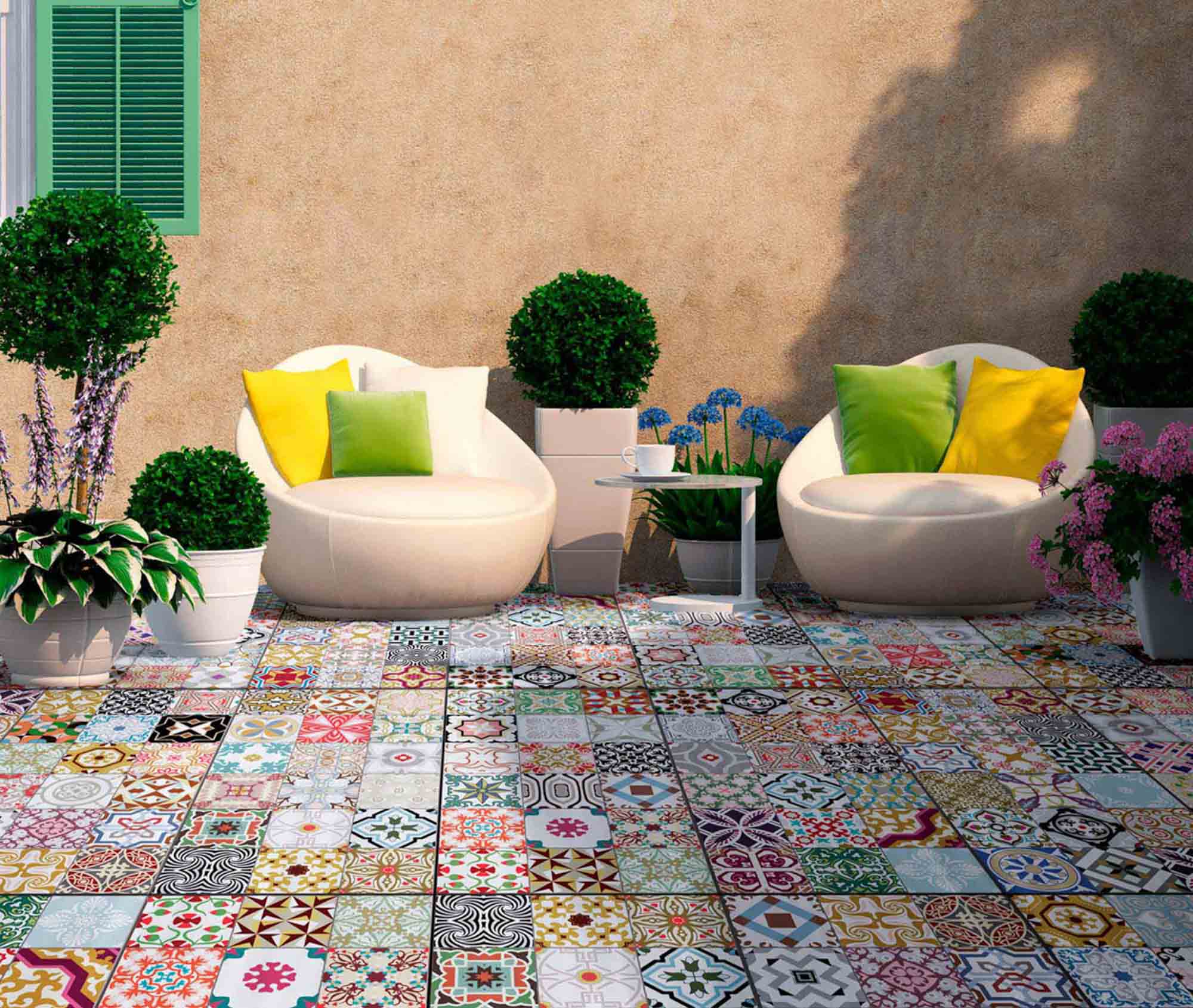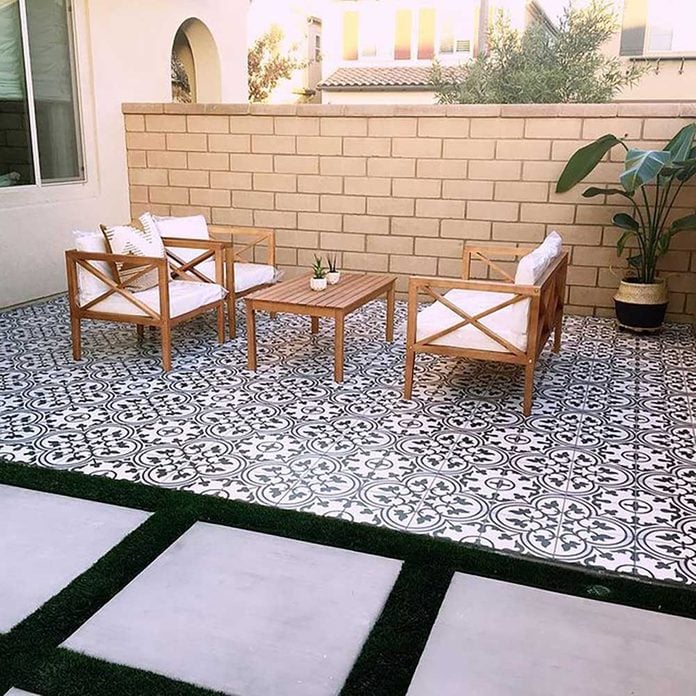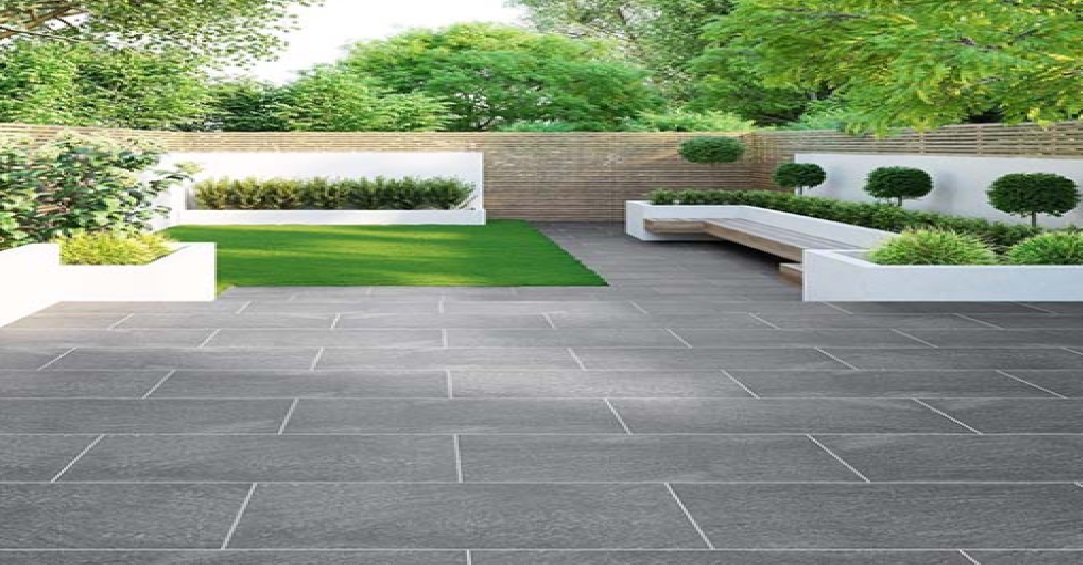Terrace tiles are specifically designed for outdoor spaces, particularly terraces and rooftops which can withstand harsh climatic conditions. Some of the key features you should consider while selecting Terrace Tiles are:
1) Durability
2) Water Resistance
3) Slip Resistance
4) Aesthetic Appeal
5) Thermal Insulation
6) Easy Maintenance.
At Rahul Ceramics Pvt Ltd, we offer a variety of terrace tiles that combine functionality with aesthetic appeal, ensuring your outdoor space is both beautiful and durable. If you have any specific requirements or need further assistance, feel free to let us know!
Waterproofing and Drainage: Tiles provide an additional layer of waterproofing that helps prevent water seepage into the building structure. Properly installed tiles with appropriate slope ensure efficient water drainage, reducing the risk of water accumulation and subsequent damage.
Durability and Longevity: Tiles are durable and can withstand various weather conditions, including heavy rain, extreme heat, and cold. This durability helps in extending the life of the terrace surface.
Aesthetic Appeal: Tiles enhance the aesthetic appeal of terraces, making them look clean, stylish, and well-maintained. There are various design options available to suit different preferences and architectural styles.
Ease of Maintenance: Tiled surfaces are easier to clean and maintain compared to other materials. Regular sweeping and occasional mopping keep the terrace looking pristine without much effort.
Safety: Anti-skid tiles can be used on terraces to reduce the risk of slips and falls, especially during the rainy season. This ensures a safer outdoor space for everyone.
Terrace tiles alone do not make your house completely waterproof, but they play a crucial role in enhancing the waterproofing of your terrace. Here's how they contribute:
Additional Layer of Protection: Tiles add an extra layer of protection on top of the waterproofing membrane. This helps in preventing water from seeping into the structural layers of your terrace.
Effective Water Drainage: Properly installed tiles with a suitable slope facilitate efficient water drainage. This reduces the chances of water pooling, which can lead to seepage and damage over time.
High-Quality Adhesives: Using high-quality tile adhesives, such as the MYK brand, ensures that the tiles are securely bonded to the surface, preventing water ingress through gaps or cracks.
Sealed Grout Lines: Proper sealing of grout lines between tiles is essential. Well-sealed grout lines prevent water from penetrating through the gaps, thereby enhancing the waterproofing effectiveness.
Durability and Maintenance: Tiles are durable and easy to maintain. Regular maintenance, such as sealing the tiles and grout, helps in preserving their waterproofing properties.
Terrace tiles can help reduce the temperature inside your house, contributing to a cooler and more comfortable living environment. Here’s how:
Reflective Properties: Many terrace tiles have reflective surfaces that can deflect a significant amount of solar radiation. This reduces the heat absorbed by the roof, consequently lowering the temperature inside the house.
Thermal Insulation: Some terrace tiles are designed with insulating properties, providing a barrier that slows down the transfer of heat from the sun into the building. This helps keep the interior cooler.
Cool Roof Effect: Light-colored or specially coated terrace tiles can create a "cool roof" effect, which reflects more sunlight and absorbs less heat. This can lead to a noticeable reduction in indoor temperatures.
Heat Dissipation: The material and design of terrace tiles can facilitate better heat dissipation, preventing the accumulation of heat on the terrace surface.
Reduced Heat Island Effect: By covering your terrace with tiles that reflect and dissipate heat efficiently, you can reduce the overall heat island effect, which is common in urban areas where concrete and asphalt dominate.
Leak Prevention:
If you lay terrace tiles during the building's construction, you avoid creating small cracks later that can let water leak through. Waiting to install tiles means more work on the terrace surface, which can cause these leaks.
Stronger Protection:
Installing tiles from the start means the waterproofing materials can work together better, creating a stronger barrier to stop water from getting through.
Avoiding Damage:
Doing the tile work early avoids using heavy tools on the terrace later, which can damage the surface and cause leaks. Keeping the structure strong from the start is key.
Saving Money and Time:
It’s cheaper and faster to lay tiles during the initial construction rather than going back and doing it later. This avoids the hassle and expense of fixing leaks and other problems that could have been prevented.
Better Looks:
Laying tiles during construction ensures they look great and match the rest of the building. Doing it later can lead to mismatched or patchy-looking tiles.
Long-Lasting Tiles:
Tiles installed during construction have more time to set properly, making them last longer and stay in place better. The surface underneath stays strong and stable, helping the tiles to perform well over time.
By following these points, you can understand why it’s much better to install terrace tiles during the initial construction phase to avoid problems and ensure a durable, good-looking finish.
YES Terrace walls should be coverd with Tiles due to following reasons :
Enhanced Protection: Tiling terrace walls provides an additional layer of protection against water infiltration. This is particularly important in areas with heavy rainfall or high humidity.
Preventing Dampness: Tiles help prevent dampness and water seepage into the walls, which can cause structural damage and promote mold growth.
Durability:
Long-lasting Surface: Tiles are durable and resistant to weather conditions, making them an ideal choice for outdoor areas like terraces.
Resistance to Wear and Tear: They can withstand the wear and tear of outdoor exposure, including temperature variations and UV rays.
Preventing Algae and Fungus Growth:
Hygienic Surface: Tiles reduce the likelihood of algae and fungus growth on terrace walls, which can be a common issue in humid and wet conditions.
Increased Property Value:
Investment in Quality: Tiling terrace walls can be seen as an investment in the property, potentially increasing its value due to the added durability and aesthetic appeal.
Branded Terrace Tiles
• Variety: Branded terrace tiles come in a wide variety of designs, colors, textures, and sizes. This allows for greater flexibility in achieving different aesthetic effects.
• High Durability: Branded tiles are designed to withstand various weather conditions, including extreme heat, cold, and heavy rain.
• Low Maintenance: These tiles require less frequent cleaning and maintenance.
• Initial Cost: Branded Terrace Tiles are more cost-effective in the long run due to lower maintenance and longer lifespan.
China Mosaic Tiles
• Weather Resistance: Small pieces and grout lines can be more susceptible to wear over time.
• Complex Installation: Installing mosaic tiles is labour-intensive and requires skilled labour.
• Frequent Cleaning: The numerous grout lines in mosaic tiles can accumulate dirt and require more frequent cleaning
• . Initial Cost: Mosaic tiles incur higher costs due to complex installation and maintenance requirements.
Winner: Branded Terrace Tiles
Branded Terrace Tiles offer significant advantages over China Mosaic Tiles in terms of aesthetics, durability, ease of installation, maintenance, and cost efficiency. They provide a more versatile, practical, and long-lasting solution for terrace flooring, making them the better choice for most applications.
Terrace Tiles are Available in Different Sizes and Thickness
By Size
100mm x 100mm, 200mm x 200mm, 300mm x 300mm, 400mm x 400mm,
600mm x 300mm, 600mm x 600mm, 1200mm x 300mm, 1200mm x 600mm
800mm x 1600mm, 1200mm x 1800mm.
By Thickness
9.5 mm, 10mm, 12mm, 13mm, 15mm, 16mm
The choice between smaller and larger tiles for a terrace depends on the specific needs and preferences of the space:
Smaller Tiles: Best for areas where safety, flexibility in design, and handling surface movement are priorities. They are particularly well-suited for terraces with irregular shapes or where slip resistance is important.
Larger Tiles: Ideal for creating a modern, seamless look with easier maintenance. They work well in larger, open spaces where a consistent and expansive appearance is desired.
Ultimately, the decision should be based on the terrace’s design, the climate, and the level of maintenance you’re willing to undertake. In some cases, a combination of both types of tiles might be the best solution, using smaller tiles in high-traffic or wet areas and larger tiles in open, central areas.
We must use Tile Adhesive for proper bonding and long lasting. MYK LATICRETE L 335 WHITE / GREY Recomended acoording to type of material laying,
Steps for Optimal Waterproofing with Terrace Tiles:
Waterproofing Membrane: Before laying tiles, apply a high-quality waterproofing membrane on the terrace surface. This serves as the primary waterproof barrier.
Tile Installation: Use professional-grade tile adhesives and ensure proper installation with a slight slope for drainage.
Grout and Sealant: Apply grout between the tiles and seal it properly to prevent water ingress. Periodic re-sealing may be necessary to maintain the integrity of the waterproofing.
Regular Maintenance: Inspect the tiled surface periodically for any signs of cracks or gaps. Address any issues promptly to maintain the waterproofing effectiveness.
By following these steps, terrace tiles can significantly enhance the waterproofing of your terrace, contributing to the overall protection of your house from water damage.
Terraces require tlies with specific properties,suh as anti-slip and weather resistance,which regular indoor tiles may not offer.
Grouting is necessary to fill the gaps between tiles, preventing water seepage and providing structural stability.
















.jpg)









